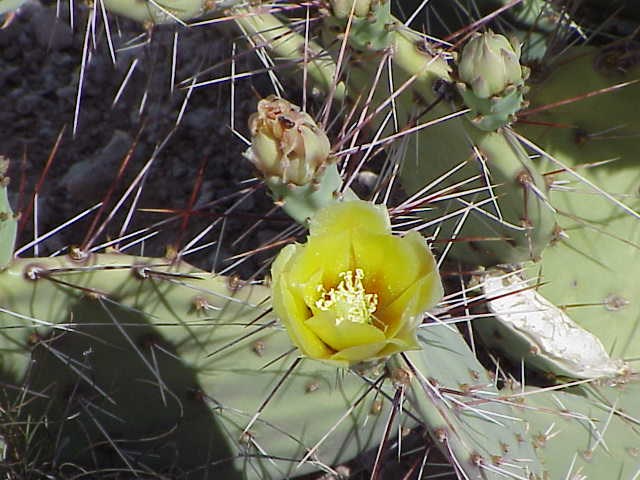
NPS To many people, the word "desert" invokes images of a sun-baked, sandy, and rock-strewn landscape, where only cacti will grow. While it is true that cacti can be found in all of the worlds' deserts, they can also be found in all of the lower forty-eight states. Cacti evolved from plants that grew in more moist environments and exhibit a wide variety of adaptations that have allowed them to thrive in the face of changing conditions. Visitors to the Verde Valley will see a variety of cacti, including species of prickly pear, cholla, and hedgehog cactus. Ground-hugging species such as hedgehog and prickly pear flower much earlier in the spring than the stately saguaros found farther south. In the Southwest, the prickly pear cactus has a long history of use, from prehistoric times up to the present day. In the spring, the young pads, called "nopalitos", are harvested and eaten before the spines harden. In the late summer, the fruits, called "tunas", are collected and can be eaten uncooked or serve as the main ingredient in jellies. The pads have been used medicinally in the treatment of burns and cuts. |
Last updated: September 14, 2021
